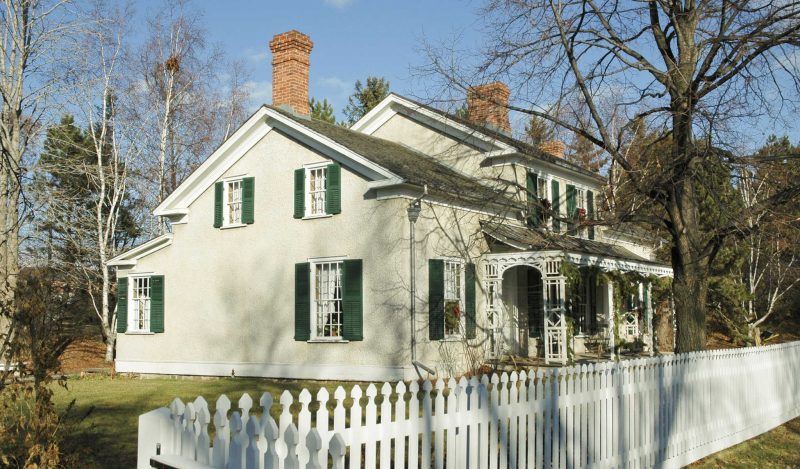Disasters aren’t always what they appear to be. Sometimes the “villains” aren’t villains at all. Sometimes, history remembers disasters incorrectly; the quest for a compelling narrative drowns out the true complexity of the situation. Sometimes, in a quest to make people care, the coverage of disasters focuses most on who has the best story, and leaves out complicated truths.
To me, Love Canal has always been one of the most striking examples of this phenomenon. Love Canal was one of the first large-scale environmental contamination incidents to receive national attention.
In the 1890’s, a developer named William Love purchased a large plot of land in upstate New York with the hopes of creating a planned community near Niagara Falls. He arranged financial backing to begin digging a canal that would serve the needs of industry, and envisioned an entire city being built up around the canal. Neighborhoods and houses and parks were all planned, and various manufacturers talked about opening plants in the area to take advantage of the hydroelectric power that would be created by Love’s venture.
Then, as has happened to many planned developments over the years, legislative and economic conditions changed. The plan was ultimately scrapped, and the land was auctioned off in a foreclosure sale. The city of Niagara Falls purchased part of the property, and began using it as a landfill in the 1920’s.
Two decades later, Hooker Chemical Company began looking for a place to dispose of chemical waste. They turned to the city of Niagara Falls, and sought permission to begin dumping at the Love Canal landfill.
In 1947, Hooker purchased the property, and became the sole user of the landfill, dumping 21,800 short tons of chemical waste over the course of the next ten years.
It was also during this time that the city of Niagara Falls was experiencing rapid growth. A number of industries had built factories in the area, and the population began to swell as people moved to the area for high-paying industrial jobs. Between 1940 and 1960, the city saw a 31 percent population increase, which strained local infrastructure. Housing was built up along every available stretch of land, and schools became overcrowded as new residents flocked to the area.
With the city desperately needing land on which to build a new school, and Hooker increasingly worried about the potential liability of having a landfill so close to crowded residential developments, a deal was reached to sell the landfill back to the city for the cost of $1. Hooker hoped that this sale would absolve them of legal liability for any contamination, and for the city, this promised cheap acreage in a rapidly expanding neighborhood.
The deal was completed in 1953, and in 1954, construction of the 99th Street Elementary School began. A second school was then built in 1955, only six blocks away, and land not needed for the schools was sold to developers to build additional housing.
During the construction of these projects, the problems with the landfill became immediately apparent, with workers discovering multiple underground dumpsites filled with barrels of chemical waste. The problems were notable enough that the original plans for the 99th Street School had to be changed after the architect expressed concern that the waste could damage the concrete foundation, and the planned kindergarten playground had to be moved from its original location after the discovery that it sat directly atop one of the dumpsites.
Still, the project continued.
The schools opened right after completion, with 400 students enrolled at the 99th Street School when it opened in the fall of 1955.
That same year, a portion of the landfill crumbled.
A 25-foot area filled with drums of chemical waste was exposed, and rainstorms would create massive puddles that drew the attention of kids. Elementary school children would flock to these colorful puddles of waste, oblivious to the danger they posed. Still, nothing was done. Kids spent recess and their hours after school splashing around in chemicals, with few parents or teachers having any idea that the area was contaminated.
For the next two decades, development would continue. More and more homes were built along the landfill. Another generation of kids attended school, gleefully playing in the colorful puddles of waste that formed after every rainstorm. Residents complained from time to time about strange odors, and a mysterious black substance that would flow from the canal, but life mostly went on as usual. It wasn’t until 1977 that the state finally began to take resident complaints seriously, and started sampling the air, soil, and groundwater along the Love Canal.
The findings were startling: More than 200 distinct organic chemical compounds were found. The levels of benzene, chloroform, dioxin, toluene, and other known carcinogens were all far above the levels considered safe for human exposure. Residents became terrified for their health and safety. As people in the area compared notes, alarms were raised over the apparent clusters of health problems, with numerous anecdotes of birth defects, cancer, and organ failure in the neighborhoods surrounding Love Canal.
Scared for the lives of themselves and their children, activists worked to bring national attention to their plight. News outlets around the country reported stories of sick children, grieving mothers, and terrified families. People in the area wanted out, but with property values decimated by the negative coverage, homeowners found themselves with no way to leave.
Desperate, women in the neighborhood brought their whole families into the fight against Hooker Chemical and the city.
Protests and rallies were planned. Husbands who couldn’t speak openly against Hooker because of their jobs were asked to pitch in around the house, so that their wives could spend more time focusing on activism. Elementary school children marched with signs, begging for the chance to live to see adulthood. Coverage around the country reached a fever pitch, until then-president Jimmy Carter declared Love Canal a federal health emergency in 1978.
Congress soon passed the Comprehensive Environmental Response, Compensation, and Liability Act (CERCLA), otherwise known as the Superfund Act, and Love Canal became the first entry on the list for remediation. The federal government ultimately relocated more than 800 families, and reimbursed them for the loss of their homes. More than 400 houses near Love Canal were demolished, and cleanup efforts began. Close to $400 million was spent during the 1980s to deal with the contamination, while the families impacted continued to worry about the long-term health risks.
Much like any true crime saga, this part of the story is pretty well-known. What’s less known and less understood is what happened in the decades since.
As it turns out, the long-term health effects of Love Canal are…ambiguous. For all of the anecdotal reports of cancer and birth defects, researchers haven’t been able to prove much. The practical and methodological limitations of environmental health studies make it so that health effects are notoriously hard to confirm, and Love Canal was no exception.
This, in and of itself, wouldn’t be noteworthy.
Again, environmental health effects are hard to prove.
Most reported clusters of health problems can never be confirmed, even when the anecdotal basis is strong enough to warrant concern. The rate of illness needed to make a finding statistically significant is quite high, and to reach that level of statistical significance, the human toll has to be absolutely catastrophic.
And this is where the findings do become noteworthy.
Researchers weren’t able to prove that Love Canal residents had higher rates of cancer, compared with the rest of upstate New York.
Researchers weren’t able to prove higher rates of organ failure.
There were some indications of reproductive harm, but the findings were inconclusive.
Few of the illnesses causatively linked with chemical contamination were significantly higher in Love Canal residents than in the general population.
What researchers did find was that former Love Canal residents were more likely to die of heart attacks, suicides, car accidents, and accidents of other types than residents of either Niagara County or the state as a whole.
Those findings were statistically significant.
Taken together, the findings indicate that a troubling number of Love Canal residents ultimately died from deaths of despair.
Once again, causative links are difficult to prove—several of the chemicals residents were exposed to were known neurotoxins. That by itself could have contributed to increased rates of depression, anxiety, and other mental illnesses. It’s possible that years of exposure to neurotoxins alone impaired decision-making in residents causing people to drink more, drive faster, and generally live more reckless lives than they otherwise would have.
But, it’s also likely that the years of stress and upheaval took a toll.
For years, women were told by their neighbors that their children would die horrible deaths because of environmental contamination. For years, men and women working for Hooker worried that the jobs putting food on their families’ tables were also killing the people they cared about. Children were told that they had nothing to look forward to; that cancer would eat their bodies before they were old enough to vote. Families felt torn between financial ruin and staying in a neighborhood that they feared would kill them. And, even the hard-fought “happy ending” was a pyrrhic victory.
It meant the loss of the lives they’d known. The marks on door casings documenting the growth of children over the years were all destroyed right along with the brick and drywall.
The places where kids learned to ride their bikes, and families celebrated holidays, and men met up with their friends after work while their wives held their book clubs and potlucks were all demolished. Decades of happy memories were bulldozed and carted off as additional toxic waste.
People who had moved to the neighborhood a decade or two earlier dreaming of a better future saw that dream turn into a protracted nightmare; their years of hard work ultimately demolished.
I don’t think it can be emphasized enough the role that this played in people’s lives.
In thinking only about the (very real) dangers posed by benzene and dioxin, activists forgot about everything else. They forgot about the fact that happy communities are healthy communities; that family dinners and book clubs are every bit as essential to a healthy life as staying away from pools of chloroform. Well-meaning people developed tunnel vision; thinking only about the dangers of the landfill, while forgetting about the dangers that come with upending a community.
Published under a Creative Commons Attribution 4.0 International License
For reprints, please set the canonical link back to the original Brownstone Institute Article and Author.









